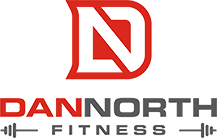
Train These Muscles Every Day
The upper back is one of the most undertrained areas of the body.
Poor postural habits and lifting technique leaves much to be desired when it comes to upper back development.
Most lifters don’t train their upper backs frequently enough because they’re too busy trying to set new bench PR’s. The ironic part is these same lifters would see their numbers skyrocket if they spent less time stroking their ego and more time doing face pulls.
Your upper back is everything when it comes to strength and stability in the main lifts. A strong upper back will..
- allow you to support more weight during the bench press.
- create a stable “shelf” for the bar to sit on during squats.
- minimize rounding and improve your puling strength during deadlifts.
The benefits of upper back training are clear, yet most lifters continue to put it on the backburner.
To train your upper back effectively, you need to:
- Minimize/eliminate support from other muscle groups (i.e. your arms).
- Minimize/eliminate any potential momentum or cheating.
- Train it frequently (3-4 times per week; maybe even daily depending on current capabilities and goals).
The last one may surprise you. The reason you can train your upper back this frequently stems from three points of logic:
- Fast recovery. Smaller muscles recover faster between sessions.
- No CNS taxing. These are not heavy lifts. Your nervous system will not be taxed at all from performing these movements.
- No joint wear and tear. The exercises shown in this article do not require you to lift heavy weights and do not add any unwanted stress to your joints or ligaments.
These exercises can be used in your workouts or as part of your warm-ups before lifting.
MUSCLE SNATCH WITH BAND
Snatches aren’t limited to just the barbell, and can be performed with kettlebells, dumbbells, and bands.
The muscle snatch, when performed correctly, is one of the best exercises you can do for your upper back. On paper, it’s pretty straightforward: lift the weight from the floor to overhead in one continuous motion.
The banded variation show here is a great warm-up tool before lifting, particularly prior to the Olympic lifts.
- Stand on one end of the resistance band and face the wall.
- Initiate the movement by pulling your elbows up towards the ceiling.
- Once your elbows reach about shoulder height, externally rotate the shoulders and lockout your arms overhead.
- Return the band back down in the same motion.
Facing the wall encourages you to pull up in one straight line, instead of letting the weight drift away from your body (a critical error when performing any snatch variation).
BAND PULL APART
There’s never a “one size fits all” prescription when it comes to training, but the band pull apart should be a requirement in 99.99% of programs.
This staple upper back exercise is pretty straightforward – grab a band and pull it. Yet, as with many exercises being performed in the gym, people still find ways to fuck it up.
The most common mistakes include hyperextending the lower back (pushing the hips forward excessively as you pull) and flaring the ribs.
This variation fixes both of these issues.
- Grab a band and stand with your back against the wall.
- Hold the band at shoulder-height with your arms locked straight.
- Press your head and lower back against the wall and draw your ribs down (think bracing your stomach to get punched).
- Pull the band apart while contracting the muscles in your upper back as hard as you can.
- Press your lower back and head against the wall throughout the entire set to eliminate rib flare so you can keep constant tension in your upper back.
PRONE BAND HOVERS
In addition to being a great exercise for the upper back, this is also a great mobility drill for the shoulders while offering a deep stretch for the pecs (a couple things 99% of lifters could afford to get more of).
- Lay prone on the floor holding a light resistance band with your arms extended overhead.
- Have two yoga blocks (or dumbbells, doesn’t matter) placed on the outside of your arms.
- Start with your arms rested on the floor.
- Keeping your arms stretched overhead, raise your arms off the floor and make as big of a circle as you can while keeping your arms locked.
- You want to hover over the yoga blocks and avoid hitting them.
A slow, controlled tempo is preferred here.
SUMMARY
Your upper back is one of the most critical areas of the body to train if your goal is to get stronger, look bigger, and live healthier. Don’t be part of the majority that neglects it. These are just a few of many exercises you can incorporate into your routine.




